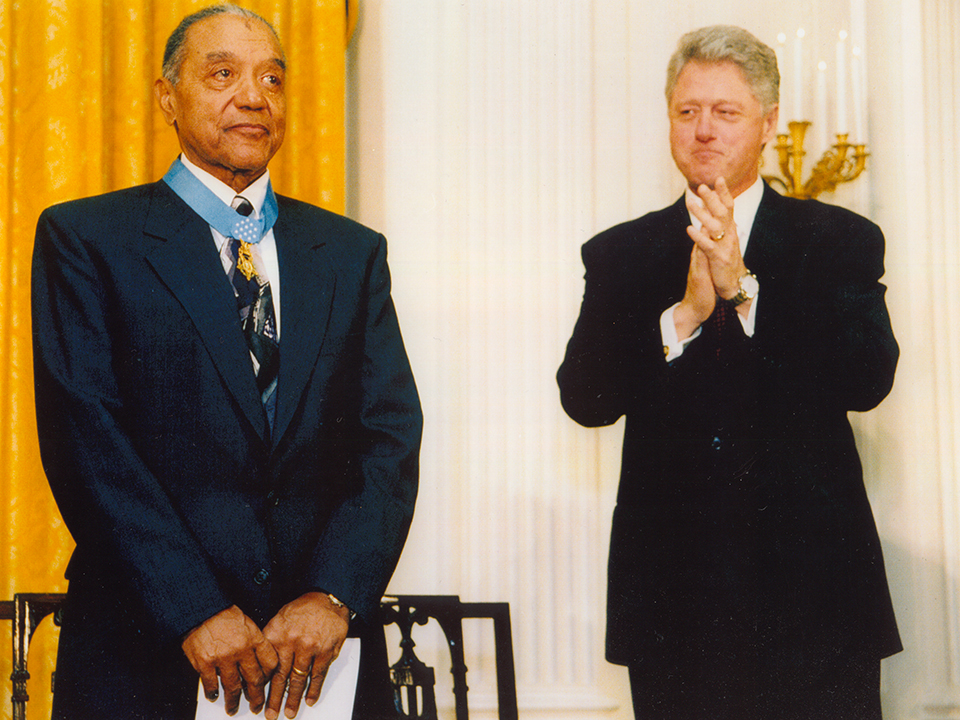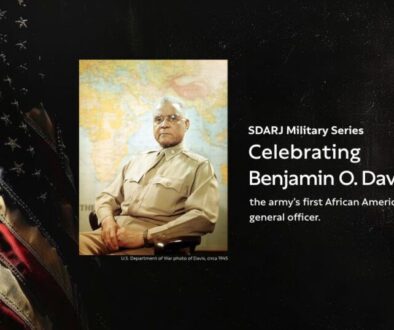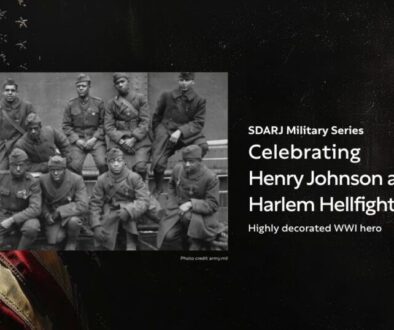Military Series – Celebrating Vernon Baker
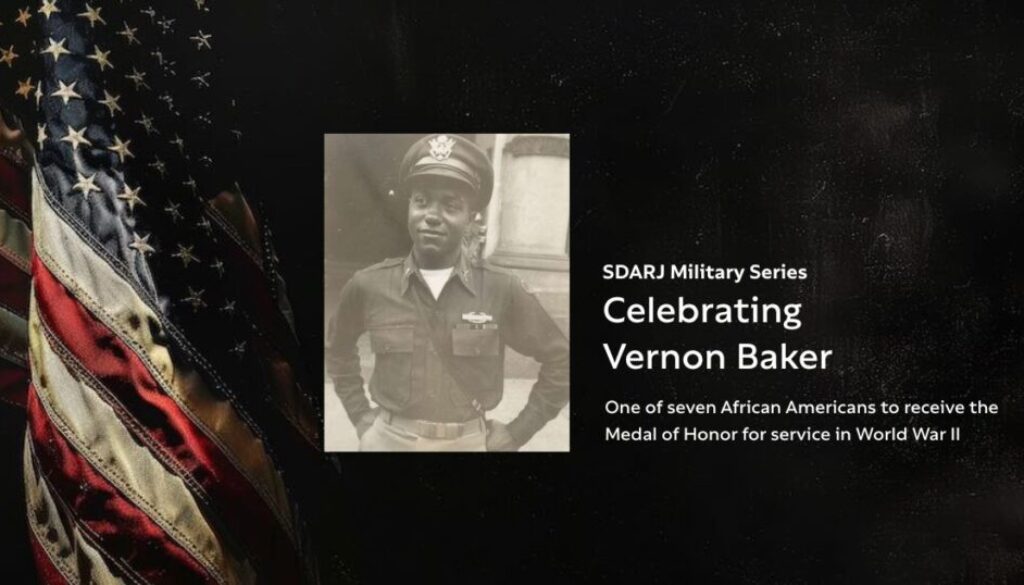
Black service members have played invaluable roles in the U.S. military since the American Revolutionary War and today, continue to serve honorably and bravely in all branches of the Armed Forces.
Vernon Baker Army 2nd Lt.
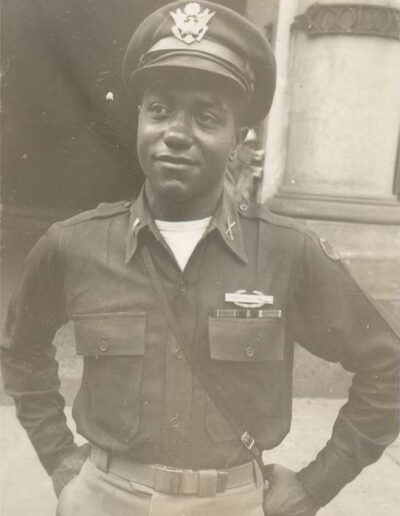
Vernon Baker
Army 2nd Lt. Vernon Baker was behind enemy lines in Italy in April 1944 when he led his team of Black soldiers from the segregated 370th Infantry Regiment through a hornet’s nest of German bunkers and machine-gun positions. Their mission? To capture Castle Aghinolfi, an enemy stronghold perched on a steep hillside.
Vernon Baker was one of seven Black service members who were presented with the Medal of Honor for their service during World War II. | Photo credit The National World War II Museum
Baker killed nine enemy troops, eliminating three machine-gun positions, an observation post and a dugout in the process. As enemy mortars, mines and incessant gunfire inflicted heavy casualties – 19 members of his 25-man platoon were killed – Baker provided cover as the remaining men withdrew. The next day, Baker led a battalion advance on the heavily fortified position and successfully secured Castle Aghinolfi for the Allies.
Although Baker received the Distinguished Service Cross for his actions, he was excluded from being presented with the Medal of Honor. Of the more than 1 million Black service members who served during WWII, none were presented with awards for their service until over 50 years later.
Tuskegee Airman Recalls Actions of USO Tour Director in Face of Racism
Vernon Baker led by example many times throughout his life. Born in 1919, Baker was orphaned at the age of four and, along with two sisters, was raised in Cheyenne, Wyoming by his grandparents. Because of Baker’s struggles with anger and fights with his grandmother, he was sent to live for several years at Father Flanagan’s Boy’s Town in Nebraska. After high school, Baker, not satisfied with his job prospects, looked to the Army for a career. Initially, he was turned away by the recruiter because he was African American, but Baker did not give up. He tried again, in June 1941, and was eventually accepted into the infantry. Though not his first choice of assignment, the Quartermaster Corps, it would do. He recalled, “I didn’t say anything because I was going to get in.”
Baker trained at Camp Wolters, Texas. From the moment he arrived there on the bus, he experienced the degradation of the Jim Crow South and had to stifle his anger in order to survive. He heard the words of his grandfather, “If you want to live, boy, learn how to conform.” The 25th Infantry, Baker’s unit, was moved to Geiger Field in Spokane, Washington, where they stayed for nearly a year. In October 1942, while at Ft. Huachuca, Baker was tapped for Officer Candidate School, a bit to his dismay because his assignment up to then as a supply sergeant was easy. Baker recalled, “I had it made.” After 13 weeks of OCS training at Ft. Benning, Baker received his commission as a 2nd Lieutenant on January 11, 1943. Subsequently he was assigned to command a weapons platoon in the segregated 370th Infantry Regiment of the 92nd Infantry Division.








